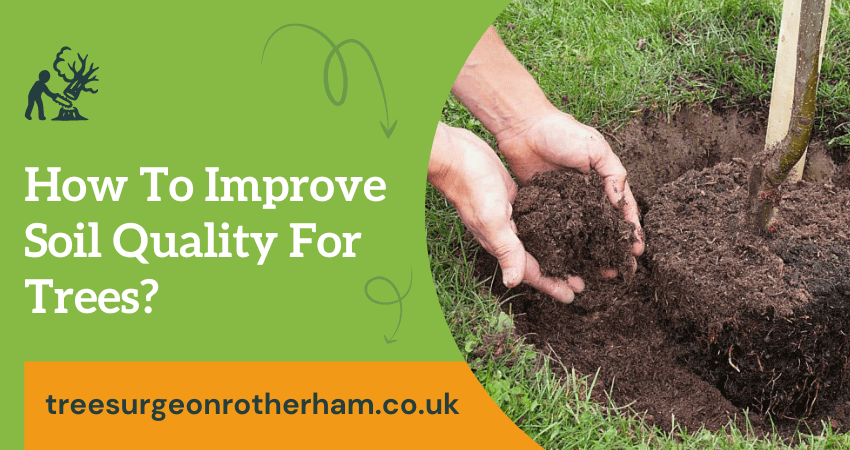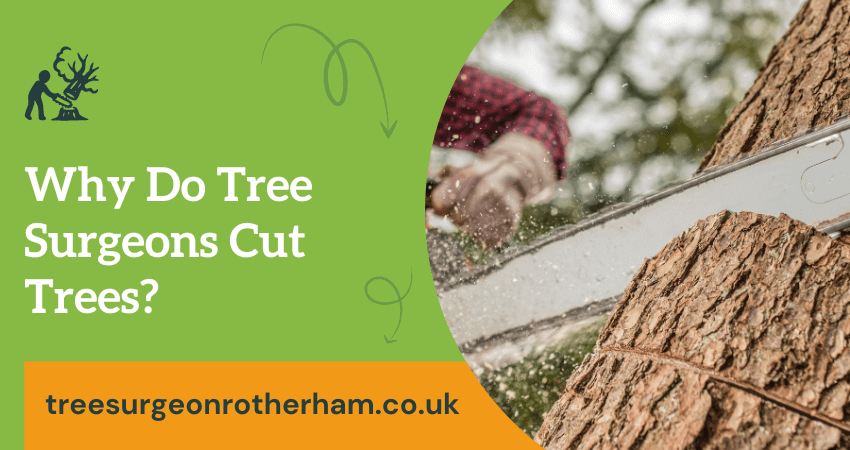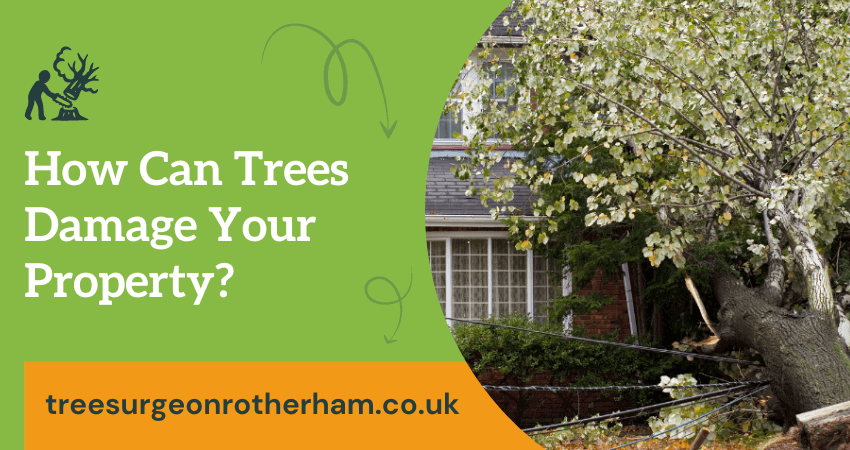For those of us with trees in our yards, growing healthy strong trees is always a priority. But proper tree care starts at the base–the root system and soil structure beneath them. Soil quality is a crucial factor in the growth and development of trees. Poor soil quality can lead to stunted growth, disease and even death.
In this blog post, we will explore various ways to improve soil quality for trees including adding organic matter, adjusting pH levels and proper irrigation.
Get 15% Discount Hire: Professional Tree Surgeon in Rotherham
By implementing these techniques, you can ensure that your trees have the best chance for a healthy and long life.
3 Ways To Improve Soil Quality For Trees?
- Add Organic Matter: Adding organic matter such as compost or peat moss can improve soil structure and increase water retention, making it easier for roots to establish and expand.
- Adjust pH Levels: Soil pH levels should be adjusted if needed to ensure optimal growth conditions for trees’ root systems (usually between 6-7). This can be done with the addition of acidic or alkaline materials and tested with a soil test kit.
- Proper Irrigation: Trees require proper irrigation to maintain optimum levels of moisture and nutrients in the soil. Be sure to avoid over-watering, which can lead to disease and fungal problems, as well as under-watering, which can lead to nutrient deficiencies.
Following these steps can help ensure that your trees have the best chance for a healthy and long life. Soil quality plays an essential role in tree health, so taking the time to invest in good soil practices can go a long way towards keeping your trees strong and stable.
How can we improve the quality of the soil for plant growth?
- Incorporate organic matter like compost, manure or grass clippings into the soil to increase its nutrient content and improve water retention.
- Test your soil’s pH level; most plants prefer slightly acidic soil ranging from 6.0 to 7.5 on the pH scale. If needed, amend your soil by adding lime or sulfur to achieve the right level of acidity.
- Loosen up compacted soils by tilling them with a shovel or garden fork before planting anything in them. This will allow roots to penetrate more easily and reduce water runoff from heavy rains or irrigation cycles.
- Plant cover crops such as legumes (e.g. clover, vetch) or grasses (e.g. rye, oats) in your garden beds during the fall and winter months to add nutrients and break up hardened soils before planting season arrives.
- Add mulch around plants to prevent weeds from sprouting and retain moisture in the soil. This will also help regulate soil temperature and keep roots cool during hot summer days.
- Water your plants deeply and infrequently to encourage deep root growth that helps protect them against drought conditions or extreme weather events.
- Rotate crops frequently so certain nutrient-hungry plants aren’t planted in the same spot year after year; this will ensure a more balanced distribution of nutrients throughout all areas of the garden.
- Practice companion planting: Certain plants have natural symbiotic relationships that can help them grow better when planted near each other. For example, tomatoes and basil or carrots and radishes.
- Avoid using synthetic chemical fertilizers, as they can cause more harm than good in the long run by disrupting soil composition and killing beneficial organisms in the soil. Instead, opt for natural fertilizers like manure or compost to provide your plants with a steady supply of organic nutrients.
- Finally, pay attention to signs of nutrient deficiencies in your plants and adjust their fertilizing regimen accordingly.
Inspect the leaves for yellowing or other discolourations that could indicate a lack of certain elements in the soil.
With these tips and tricks, you can easily improve the quality of the soil in your garden and produce healthier, more abundant harvests.
What type of soil is best for trees?
When selecting the best soil for trees, it’s important to take into account several factors. The most important things to consider are nutrient content, porosity, acidity or alkalinity (pH) and drainage.
Ideally, the best soil for trees should be a mix of organic matter and minerals such as sand, silt or clay. Compost is an excellent choice as it provides essential nutrients needed by trees. Good balance between different-sized particles in the soil will also help with drainage and aeration around tree roots.
The ideal pH level of soil should range from 6-7 which is slightly acidic. This allows vital macro and micro-nutrients necessary for healthy tree growth to be available easily in the soil.
For trees with shallow root systems, it is important to have loose, well-draining soil as this helps reduce compaction and improves water absorption. When planting trees in heavy clay soils, add organic matter like compost or mulch to improve their structure and drainage.
Overall, the best type of soil for trees should be moist but not soggy, rich in organic matter, well-draining and slightly acidic – all of which will ensure optimal tree growth and health.
Final Words
The health of your trees begins with the quality of the soil they are growing in. If you want to improve the quality of your tree’s soil, there are a few things you can do.
Use organic matter to improve drainage and add nutrients to the soil. You can also use mulch to protect the roots and help retain moisture. By following these tips, you can ensure that your trees have the best chance to grow healthy and strong.




